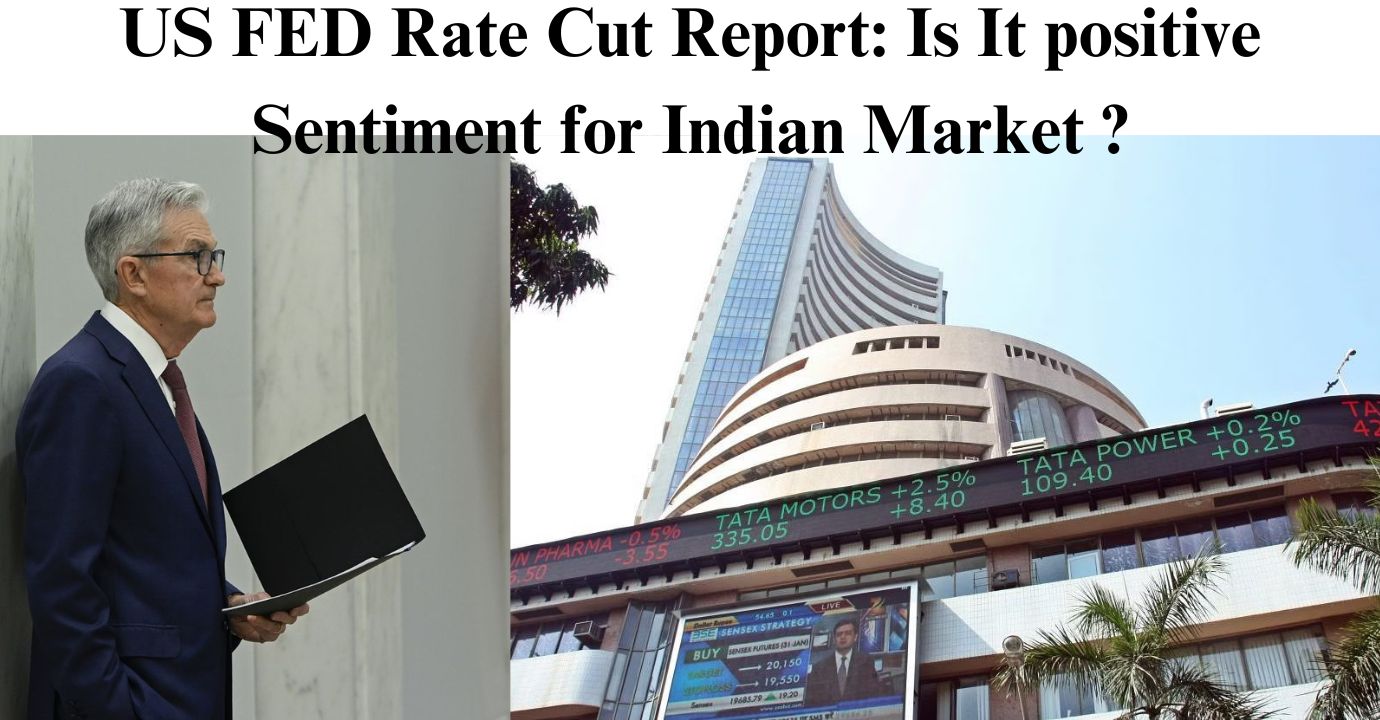
US Fed Rate Cut Report : Following a two-day meeting of the Federal Open Market Committee (FOMC), the US Federal Reserve announced its sixth policy decision for 2024 on September 18. The Fed cut the benchmark interest rate by 50 basis points (bps), or ½ of a percentage point, to 4.75 percent to 5 percent for the first time in four years, largely in line with Wall Street estimates.
In order to reach a range of 2.75 percent to 3.00 percent, US Fed policymakers anticipate that the benchmark interest rate would drop by an additional half-point (50 bps) by the end of this year, another full percentage point in 2025, and a final half-point in 2026. One tenth (1/100) of a percentage point is equivalent to one bps.
- US Fed Rate Cut Report: Gold falls from record high as US currency and rates rise due to Fed Chairman Powell's remarks
- US Fed Rate Cut Report Impact – Wall Street ends the day slightly down; US stocks fluctuate following the Fed's rate drop.
- How Indian Market will React Today On After US Fed Rate Cut Data?
- Today's Main Focus On Commodities
US Fed Rate Cut Report: Gold falls from record high as US currency and rates rise due to Fed Chairman Powell’s remarks
As the US dollar and Treasury rates increased in response to remarks made by Federal Reserve Chair Jerome Powell following the US central bank’s massive 50 basis point (bps) rate decrease, gold prices fell from their all-time highs on Wednesday.
As of 04:07 p.m. ET (2007 GMT), spot gold was down 0.7% at $2,552.49 per ounce, having reached a record high of $2,599.92 following the Fed’s rate announcement.
At $2,598.60, US gold futures ended the day 0.26 percent higher. With a half-percentage-point reduction, the US central bank began a gradual loosening of monetary policy, and officials anticipate that the Fed’s benchmark rate would drop by an additional half-percentage point by year’s end.
Powell, however, stated that although it is evident that inflation pressures have decreased, he is not prepared to declare that pricing pressures have finally decreased. Other currency holders found gold less appealing when the US dollar strengthened following a dip that lasted more than a year.
US Fed Rate Cut Report Impact – Wall Street ends the day slightly down; US stocks fluctuate following the Fed’s rate drop.
US equities ended the day on Wednesday with slight losses, much below their opening-morning highs, following the Federal Reserve’s interest rate cut of 50 basis points, which was on the higher end of expectations for the first rate reduction in almost four years.
The trading was erratic. The S&P 500 fluctuated between small gains and losses before the news. Following the announcement, the benchmark index increased by as much as 1% before giving up gains and ultimately closing down.
Preliminary data shows that the Nasdaq Composite lost 54.76 points, or 0.31 percent, to 17,573.30, while the S&P 500 lost 16.32 points, or 0.29 percent, to finish at 5,618.26 points. To reach 41,503.10, the Dow Jones Industrial Average dropped 103.08 points, or 0.25 percent.
How Indian Market will React Today On After US Fed Rate Cut Data?
Interest rate reduction by the U.S. Federal Reserve of 50 basis points (bps) have a big impact on world markets, particularly the Indian share market. The Indian market might respond as follows:
1. Positive Sentiment in Equities:
Lower yields in the US could encourage foreign investors to go elsewhere for better returns, which could result in capital flight from the US and an increase in investment in developing nations like India in the event of a rate cut.
The market may surge in Indian shares, particularly in industries like IT, banking, and export-oriented businesses, if U.S. interest rates decline and investors’ appetite for risk rises.
2. Currency Impact:
The US dollar may decline in response to a rate drop by the Fed, strengthening the Indian rupee. This would help businesses that rely heavily on imports, but it might also significantly harm exporters—particularly IT firms with dollar earnings.
3. Impact On IT Sector:
Given that a sizable amount of their revenue comes from US clients, Indian IT companies may feel some pressure as a result of the rupee’s strengthening.
Due to broader economic growth, some exporters, such as pharmaceutical businesses, may experience currency-related issues, although overall prospects may stay solid.
4. Banking and Financial Sector:
Indian financial institutions may experience lower borrowing costs as a result of the US lowering interest rates, which would increase their profits and profitability. In reaction to this, banks and non-banking financial companies (NBFCs) might do well.
5. RBI’s Monetary Policy Implications:
When determining its own monetary policy, the Reserve Bank of India (RBI) may take this development into account. Should inflation continue to be contained, the RBI may be likely to stick to its dovish policy, which would help the market even more.
Today’s Main Focus On Commodities
Oil prices in particular could rise as a result of a declining value of the dollar. Given that India is a significant oil importer, higher crude prices could exacerbate inflationary pressures and have a detrimental effect on businesses that depend on oil, such as transportation.
Due to growing inflows of foreign capital, a greater willingness to take risks, and advantageous circumstances surrounding Indian equities, the Indian share market is expected to respond positively at first. Currency swings and inflation worries, however, might have an effect on a certain industry.
